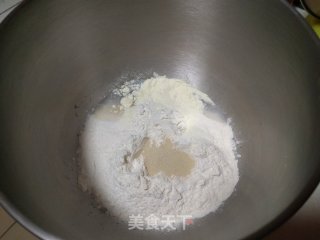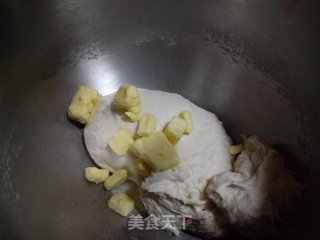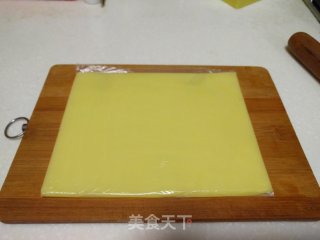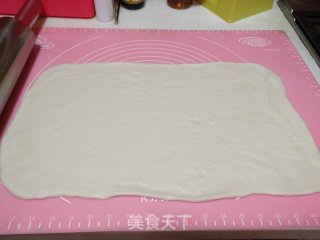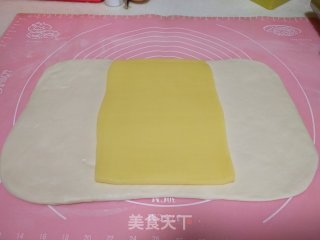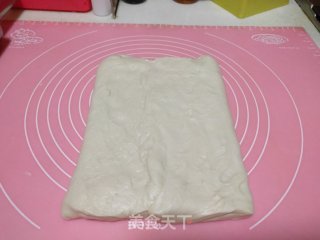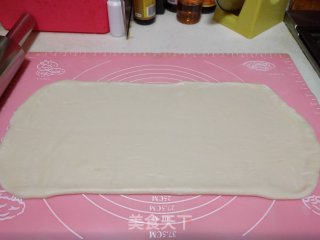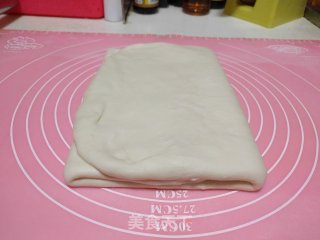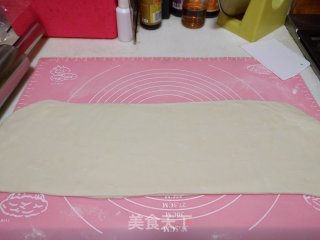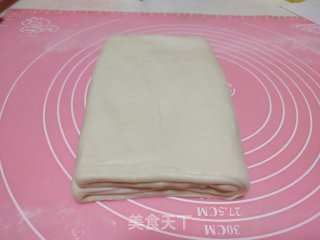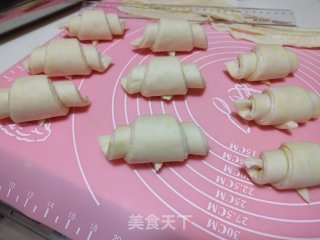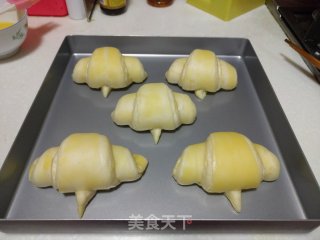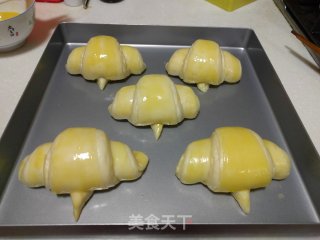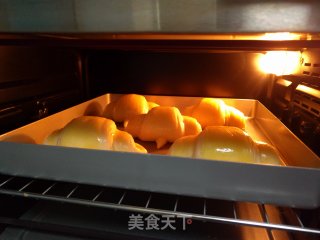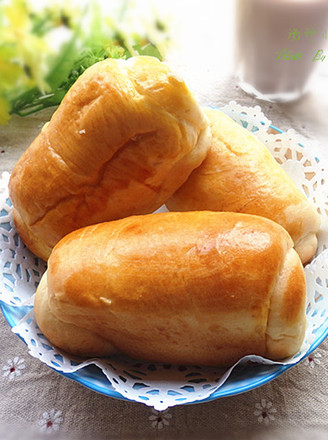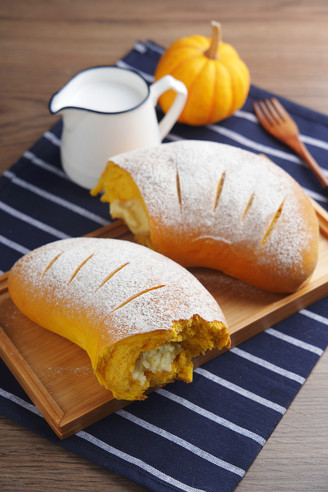Croissant
1.
Pour the main dough materials except the butter into the mixing bucket, fix the bucket and beat it into a ball
2.
After the dough becomes gluten, add butter that has softened at room temperature
3.
Continue to beat until the dough can pull out a smooth film
4.
Put the kneaded dough into a bag, flatten it and put it in the refrigerator for 30 minutes
5.
While the dough is freezing, beat the flaky butter with a rolling pin to lengthen it
6.
Take out the dough and roll it out to about twice the size of the butter slice
7.
Place flaky butter in the center of the dough
8.
Then wrap it up, drain the air and seal it
9.
Turn the dough 90 degrees and roll it out in the direction of the fold
10.
Then fold the two sides inward along 1/3
11.
Turn it 90 degrees again and roll it out in the direction of the hemming
12.
Then fold the dough in half and then fold it in half, which is a quarter-fold
13.
According to the situation, put the dough in the refrigerator for a while, then roll it into a 4mm thick dough sheet along the folding direction, cut off the uneven edges, and then cut the dough sheet into an isosceles triangle with a bottom edge of 9cm*21cm high
14.
Roll up the dough one by one, paying attention to the sharp corners on the bottom
15.
Then put the shaped dough into the baking tray
16.
Put it in a warm and humid place for fermentation, to about 2 times the size
17.
Brush a layer of egg liquid on the surface of the dough, and be careful not to brush the cut surface
18.
Then put the baking tray into the middle layer of the preheated oven, 180 degrees for about 18 minutes
19.
Put it on the grill and let cool after it’s out of the oven
Tips:
1. When I made it, I added water according to the usual habit of making sweet bread. The result was that the kneaded dough was too soft and had a different hardness from butter, and the effect was not good when rolling;
2. The method of rolling should be rolling while pressing, and the butter should be soft, otherwise it is easy to break;
3. The temperature and humidity must be well controlled during fermentation. A slightly higher temperature will cause the butter to melt and flow out, which will definitely fail. . .


